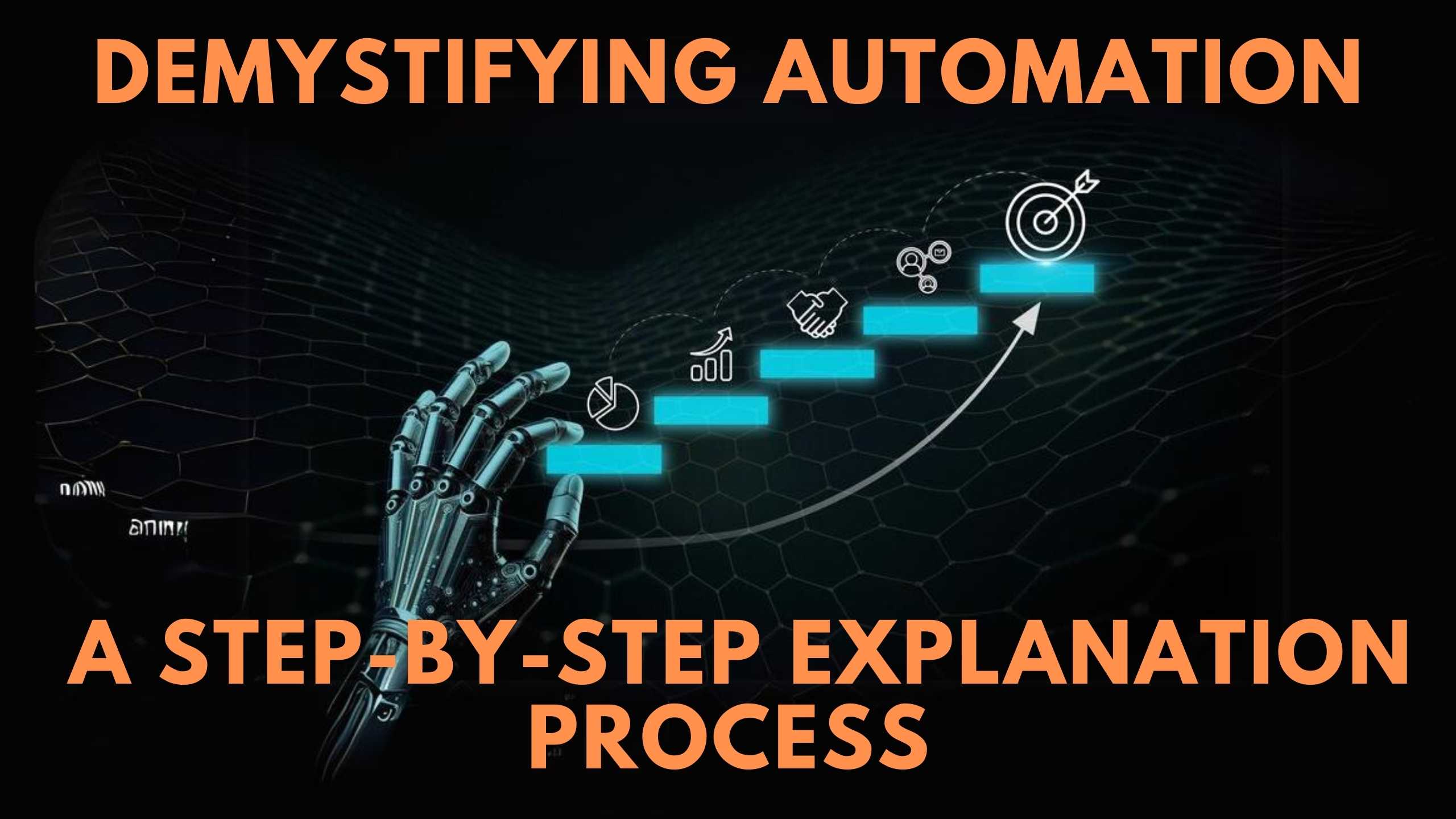Demystifying Automation: A Step-by-Step Explanation Process
-


Demystifying Automation: A Step-by-Step Explanation Process
Automation has become a cornerstone in optimizing workflows and increasing efficiency across various industries. Understanding the intricacies of the automation process is crucial for businesses aiming to streamline operations. In this comprehensive guide, we will demystify the automation journey, breaking it down into a step-by-step explanation.
1. Defining Automation in a Business Context
Automation, in a business context, refers to the use of technology to perform repetitive tasks without human intervention. This could range from automating data entry to orchestrating complex workflows. Understanding the scope of automation sets the foundation for its successful implementation.
2. Identifying Manual Processes for Automation
Begin by identifying manual processes that can be automated. This involves assessing tasks that are repetitive, time-consuming, and prone to human error. Automation targets these areas to enhance accuracy and efficiency.
3. Choosing the Right Automation Tools
Selecting the appropriate automation tools is critical. Tools like Zapier and Notion allow seamless integration between different applications, enabling the creation of automated workflows without the need for coding skills.
4. Creating Automated Workflows
Once the tools are in place, design automated workflows. This involves mapping out the entire process, specifying triggers, actions, and conditions. Automated workflows ensure that tasks are executed consistently and according to predefined rules.
5. Testing and Refining Automation Processes
Thorough testing is essential to identify any potential issues in the automated processes. Tools like Selenium can be employed for testing web applications, ensuring that the automation functions as intended. Regular refinement based on testing results is key to a well-optimized system.
Relevant SaaS Products:
- Zapier: Zapier simplifies automation by connecting apps and automating workflows, making it a valuable tool for businesses looking to enhance efficiency through seamless integration.
- Notion: With its powerful automation capabilities, Notion enables businesses to create sophisticated workflows, automate data synchronization, and streamline processes.
- Selenium: Selenium is a testing framework for web applications, ensuring the reliability and functionality of automated processes, crucial for businesses relying on web-based automation.
- Ahrefs: Ahrefs aids businesses in automating SEO-related tasks, such as keyword research and competitor analysis, contributing to a more efficient and data-driven SEO strategy.
- Monday.com: As a project management tool, Monday.com streamlines collaboration and task management, offering automation features to enhance team productivity.
Conclusion
Demystifying the automation process involves understanding its definition, identifying opportunities for automation, selecting the right tools, creating workflows, and continuous testing and refinement. By embracing automation strategically, businesses can achieve enhanced efficiency and productivity.
Automate Smarter with Subscribed.fyi
Ready to take your automation efforts to the next level? Subscribed.fyi offers exclusive deals on top-notch SaaS tools like Zapier and Automate.io. Sign up today to unlock savings on automation tools that can revolutionize your business processes. Subscribe for Exclusive Deals!
Relevant Links:





